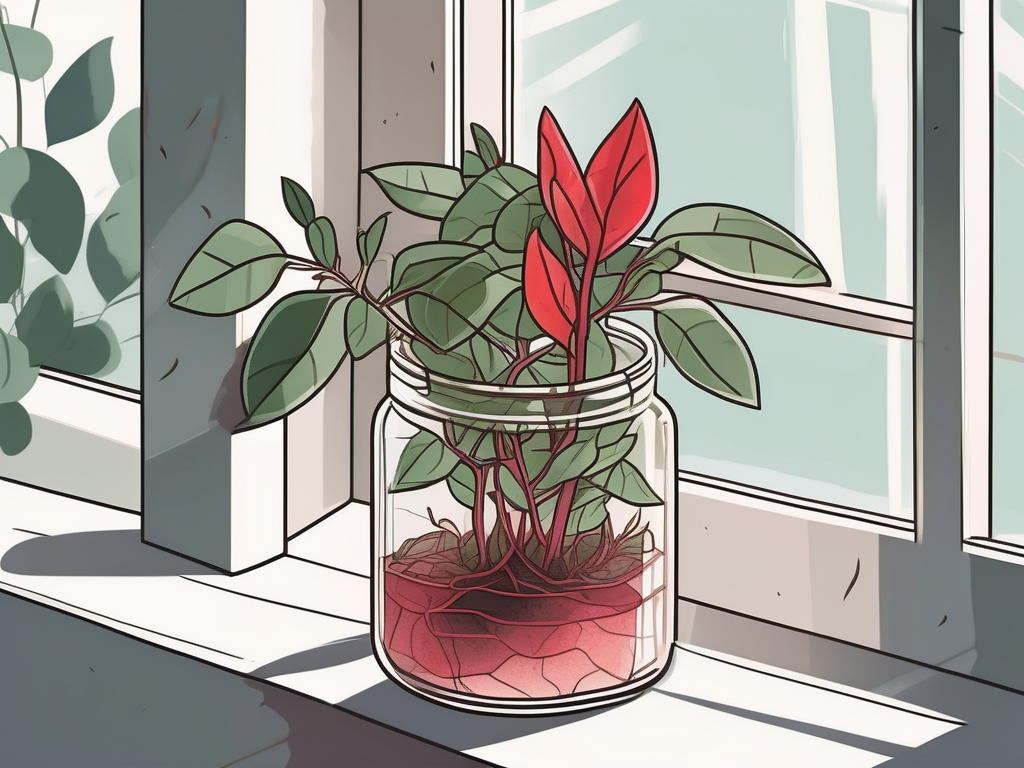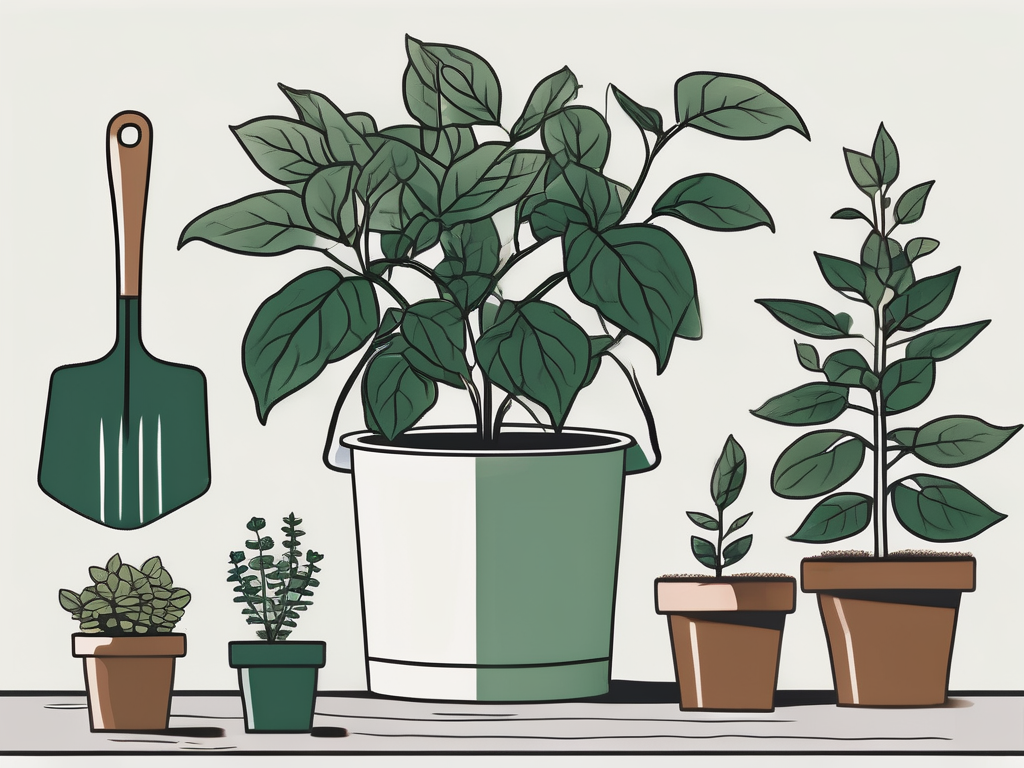
Kimberly Queen Ferns are a popular choice for plant lovers who want to add a touch of green to their homes. These ferns are known for their upright, sword-like leaves that bring a natural and elegant vibe to any space. However, like all houseplants, they need a little TLC from time to time, and repotting is an essential part of that care.
In this article, we'll walk you through everything you need to know about repotting your Kimberly Queen Fern. From recognizing when it's time for a new pot to choosing the right soil and container, we've got you covered. Let's dive into the details and ensure your fern continues to thrive.
When Should You Repot Your Kimberly Queen Fern?
Repotting your fern isn't something you'll need to do every month, but it's essential to recognize the signs that your plant is ready for a new home. Generally, you should consider repotting your fern every 1 to 2 years, but there are some tell-tale signs that it's time to take action sooner:
- Roots Growing Out of the Drainage Holes: If you notice roots poking out from the bottom of the pot, it's a clear indication that your plant needs more space.
- Slowed Growth: If your fern's growth seems to have stalled, it might be because it's becoming root-bound and needs more room to spread its roots.
- Water Drains Too Quickly: If water seems to rush through the pot without soaking into the soil, it may be time to repot.
- Soil Compaction: Over time, soil can become compacted, reducing its ability to retain moisture and provide nutrients to your plant.
Recognizing these signs early can help keep your fern healthy and happy. If you notice one or more of these indicators, it might be time to prepare for a repotting session.
Choosing the Right Pot and Soil
Now that you've decided it's time to repot, the next step is selecting the right pot and soil for your fern. This step is crucial because the wrong choice can affect your plant's health and growth.
Picking the Perfect Pot
When it comes to choosing a pot, size matters. You want to choose a pot that's about 1-2 inches larger in diameter than the current one. This gives the roots enough space to grow without overwhelming the plant. Here are a few other things to consider:
- Drainage: Ensure the pot has drainage holes to prevent waterlogging, which can lead to root rot.
- Material: Terra cotta pots are a great choice for Kimberly Queen Ferns because they allow air circulation and help prevent overwatering. Plastic pots retain moisture better, which might be beneficial if you tend to forget watering.
- Style: Choose a pot that complements your home decor. After all, plants are part of your interior design.
Selecting the Best Soil
The right soil mix can make a world of difference for your fern. Kimberly Queen Ferns prefer a rich, well-draining potting mix. You can either buy a pre-mixed fern soil or create your own blend. Here's a simple recipe for a DIY fern soil mix:
- 2 parts peat moss or coco coir
- 1 part perlite or coarse sand
- 1 part compost or well-rotted leaf mold
Mix these ingredients well to create a soil blend that retains moisture while allowing excess water to drain away. This balance will help keep your fern's roots healthy and prevent rot.
Preparing for Repotting
Before you start repotting, it's essential to gather all the necessary tools and materials. Having everything ready will make the process smoother and less stressful for you and your plant.
What You'll Need
- New Pot: Make sure it's clean and has drainage holes.
- Potting Mix: Either a commercial fern mix or your DIY blend.
- Watering Can: To water the plant after repotting.
- Gloves: Optional, but they can protect your hands from dirt and scratches.
- Pruning Shears: To trim any dead or damaged roots.
- Trowel or Spade: For removing the plant from its current pot.
Having these tools at hand will streamline the repotting process and help you avoid unnecessary interruptions.
Step-by-Step Repotting Process
With your tools ready, it's time to get your hands dirty and give your fern a new home. Repotting might seem daunting at first, but with these simple steps, you'll have your fern settled in no time.
1. Water the Plant
A day before you plan to repot, water your fern thoroughly. Moist soil will make it easier to remove the plant from its pot without causing damage to the roots.
2. Remove the Plant from Its Current Pot
Gently tip the pot on its side and carefully slide the plant out. You might need to tap the sides of the pot or run a knife around the edge if it's stuck. Be gentle to avoid stressing the plant.
3. Examine the Roots
Once the plant is out, take a look at the roots. Trim any that are dead, damaged, or excessively long. This encourages healthy growth and prevents root-bound issues in the new pot.
4. Add Soil to the New Pot
Place a layer of fresh potting mix at the bottom of the new pot. This layer should be thick enough that when the plant is placed on top, the crown (where the stems meet the roots) is about an inch below the pot's rim.
5. Position the Plant
Place the fern in the center of the new pot. Add more soil around the sides, pressing down gently to remove air pockets. Ensure the plant is upright and stable.
6. Water Again
Once the fern is secure in its new pot, water it thoroughly. This helps settle the soil and reduces transplant shock. Let the excess water drain out, and avoid letting the pot sit in water.
Post-Repotting Care
After repotting, your fern might need a little extra care as it adjusts to its new environment. Here are some tips to help your plant recover and thrive:
- Avoid Direct Sunlight: Place your fern in a spot with indirect light. Direct sunlight can stress the plant while it's adjusting.
- Maintain Humidity: Kimberly Queen Ferns love humidity. Consider misting the plant or placing a humidifier nearby to keep the moisture levels up.
- Watch for Stress Signs: Yellowing leaves or wilting might indicate transplant shock. Give your plant time to adjust, and ensure you're not overwatering.
With these tips, your fern should bounce back and continue to enhance your home with its graceful presence.
Common Repotting Challenges and How to Overcome Them
Repotting isn't always a seamless process, and sometimes challenges can arise. Here are a few common issues and how to tackle them:
Root Bound Plants
If your fern is severely root-bound, gently tease apart the roots before repotting. You can also make a few vertical cuts around the root ball to encourage new growth.
Soil Spillage
Soil can get messy during the process. Work over a tarp or old newspaper to catch any spills, making cleanup a breeze.
Plant Instability
If your fern isn't standing upright after repotting, add more soil and press down gently to stabilize it. You can also use a stake temporarily to support it until the roots take hold.
With patience and care, these challenges can be easily managed, ensuring a successful repotting experience.
Benefits of Repotting Your Kimberly Queen Fern
Repotting your fern isn't just about giving it a new pot. It has several benefits that contribute to the overall health and beauty of your plant:
- Encourages Growth: A larger pot provides more space for roots to grow, leading to healthier foliage.
- Fresh Soil Nutrients: New soil offers a fresh supply of nutrients, boosting the plant's vitality.
- Improved Drainage: Fresh soil and proper pot drainage help prevent waterlogging and root rot.
- Prevents Disease: Repotting can remove old, compacted soil that may harbor pests or diseases.
These benefits make repotting a worthwhile task, ensuring your fern remains a vibrant part of your home decor.
Styling Your Space with Kimberly Queen Ferns
Besides their health benefits, Kimberly Queen Ferns are a fantastic addition to any interior design. Their rich green leaves can complement any style, from modern to bohemian. Here are a few ideas for incorporating ferns into your home:
Entryway Elegance
Placing a fern in your entryway can create a welcoming atmosphere. Pair it with a stylish pot that complements your decor for an added touch of elegance.
Bathroom Oasis
Ferns thrive in the humidity of a bathroom. Place one on a shelf or in a hanging planter to bring a spa-like vibe to the space.
Living Room Focal Point
Use a large fern as a focal point in your living room. Pair it with other houseplants of varying heights for an eye-catching display.
With their versatile nature, Kimberly Queen Ferns can enhance any room, adding life and color to your home.
Keeping Your Ferns Happy: Ongoing Care Tips
Once your fern is happily settled in its new pot, ongoing care is crucial to maintain its health. Here are some tips to keep your Kimberly Queen Fern thriving:
- Regular Watering: Keep the soil consistently moist, but avoid overwatering. Allow the top inch of soil to dry out before watering again.
- Fertilizing: Feed your fern with a balanced, water-soluble fertilizer every month during the growing season (spring and summer).
- Pruning: Trim any dead or yellowing leaves to encourage new growth and maintain the plant's appearance.
- Pest Control: Keep an eye out for pests like spider mites or aphids. Treat any infestations promptly with neem oil or insecticidal soap.
With these care tips, your Kimberly Queen Fern will continue to flourish, bringing natural beauty to your home.
Final Thoughts
Repotting your Kimberly Queen Fern is a rewarding process that ensures your plant remains healthy and vibrant. By choosing the right pot and soil, preparing adequately, and following a step-by-step approach, you can give your fern the best chance to thrive. Remember, ongoing care and attention are key to keeping your plant happy.
At Cafe Planta, we're passionate about helping you care for your plants. Whether you're searching for the perfect plant or need advice, we're here to support you. Check out our plant care accessories and plant-themed apparel, or reach out via email or Instagram. We're excited to share our love of plants with you and help you create a beautiful, thriving plant collection in your home.












